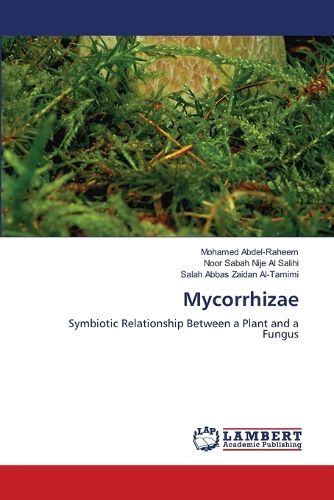Readings Newsletter
Become a Readings Member to make your shopping experience even easier.
Sign in or sign up for free!
You’re not far away from qualifying for FREE standard shipping within Australia
You’ve qualified for FREE standard shipping within Australia
The cart is loading…






This title is printed to order. This book may have been self-published. If so, we cannot guarantee the quality of the content. In the main most books will have gone through the editing process however some may not. We therefore suggest that you be aware of this before ordering this book. If in doubt check either the author or publisher’s details as we are unable to accept any returns unless they are faulty. Please contact us if you have any questions.
A mycorrhiza is a symbiotic relationship between a plant and a fungus, with the term originating from Ancient Greek words meaning 'fungus' and 'root'. The term mycorrhiza specifically highlights the fungus's role in the plant's root system and surrounding soil. Mycorrhizae are crucial for plant nutrition, soil biology, and soil chemistry. In a mycorrhizal relationship, the fungus takes over the root tissues of the host plant, either within the cells as seen in arbuscular mycorrhizal fungi or outside the cells as observed in ectomycorrhizal fungi. This relationship is typically beneficial for both the fungus and the plant. However, in certain species or under specific conditions, mycorrhizae may have a parasitic connection with the host plants. A mycorrhiza is a mutualistic relationship between a plant and a fungus. The plant generates organic compounds through photosynthesis and shares them with the fungus in the form of sugars or lipids. In return, the fungus provides the plant with water and essential nutrients like phosphorus extracted from the soil. Mycorrhizas are present in the roots of vascular plants, but similar associations can also be found in bryophytes.
$9.00 standard shipping within Australia
FREE standard shipping within Australia for orders over $100.00
Express & International shipping calculated at checkout
This title is printed to order. This book may have been self-published. If so, we cannot guarantee the quality of the content. In the main most books will have gone through the editing process however some may not. We therefore suggest that you be aware of this before ordering this book. If in doubt check either the author or publisher’s details as we are unable to accept any returns unless they are faulty. Please contact us if you have any questions.
A mycorrhiza is a symbiotic relationship between a plant and a fungus, with the term originating from Ancient Greek words meaning 'fungus' and 'root'. The term mycorrhiza specifically highlights the fungus's role in the plant's root system and surrounding soil. Mycorrhizae are crucial for plant nutrition, soil biology, and soil chemistry. In a mycorrhizal relationship, the fungus takes over the root tissues of the host plant, either within the cells as seen in arbuscular mycorrhizal fungi or outside the cells as observed in ectomycorrhizal fungi. This relationship is typically beneficial for both the fungus and the plant. However, in certain species or under specific conditions, mycorrhizae may have a parasitic connection with the host plants. A mycorrhiza is a mutualistic relationship between a plant and a fungus. The plant generates organic compounds through photosynthesis and shares them with the fungus in the form of sugars or lipids. In return, the fungus provides the plant with water and essential nutrients like phosphorus extracted from the soil. Mycorrhizas are present in the roots of vascular plants, but similar associations can also be found in bryophytes.